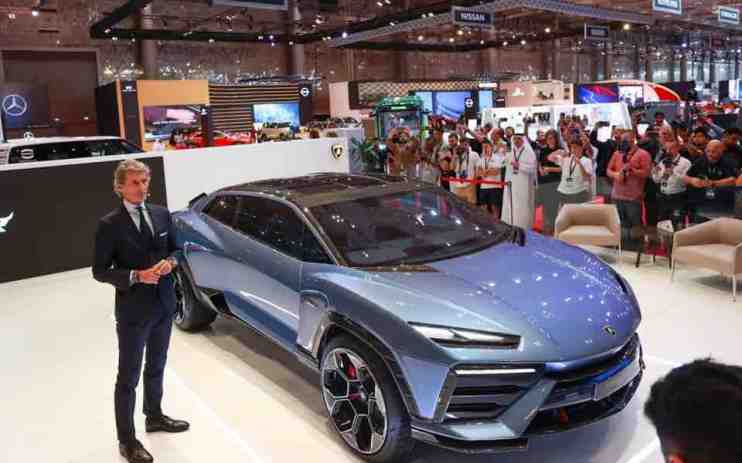Lamborghini breaks sales record as CEO lays out plan for ’emotional’ EVs

Lamborghini broke its own sales record in 2023, surpassing 10,000 cars for the first time. In the Italian marque’s 60th anniversary year, it delivered a total of 10,112 new vehicles – up 10 percent versus 2022.
The United States was comfortably Lamborghini’s largest market, with 3,000 cars delivered during the past 12 months. It was followed by Germany (961), China (845), the UK (801) and Japan (660).
The Urus SUV was Lamborghini’s best-seller overall, finding 6,087 new owners in 2023. The workforce at Sant’Agata also assembled 3,962 Huracans, the final 12 examples of the Aventador Ultimae and 51 exclusive ‘Few-Offs’ (including the reborn Countach, plus the Invencible and Autentica hypercars).
We spoke with Lamborghini CEO Stephan Winkelmann about his vision for the future, from the company’s ‘Cor Tauri 2.0’ strategy for electrification to its new SC63 Le Mans racer.
Huracan ends on a high
Referring to Lamborghini’s sales success, Winkelmann said it came despite a backdrop of increasingly turbulent world events. Yet he also stressed the company won’t chase volume at the expense of exclusivity and retained values: “We’ll always build fewer cars than the market demands.” The waiting list for a Urus extends into 2025, while the flagship Revuelto is sold out until 2026.
Winkelmann seemed chuffed by the Huracan racking up its best ever sales total: a remarkable result in the supercar’s final full year of production. Are customers keen to buy a naturally aspirated V10 while they still can? Perhaps, but the CEO also points to derivatives such as the track-focused STO and rugged Sterrato, which have maintained interest in the car and driven up deliveries.
Looking ahead, order books are already open for the soon-to-be-revealed Urus hybrid, while the Huracan’s successor arrives later this year. The latter swaps that voracious V10 for a twin-turbocharged V8 backed up by three electric motors. Winkelmann confirms that “open and higher performance” versions are in the pipeline, but won’t confirm a sequel to the Sterrato. At least, not yet…
Lanzador EV on the way
Lamborghini recently revealed a concept for its first EV, the 1,360hp Lanzador, and the production car is on-track for launch in 2028. Winkelmann explains that both its electric drivetrain and crossover-style body garnered a “positive reaction”, with in-depth customer clinics due soon.
The Lamborghini boss admits that creating an electric car “to deliver the attributes of repeated acceleration, top speed and range, all at the highest level, is almost mission impossible”. However, being part of the Volkswagen Group offers a “big advantage”, providing Lamborghini with access to the latest EV battery technology.
“Translating the emotional part of Lamborghini into an electric car” is arguably an even greater challenge. “Much more important than the facts and figures is how you feel,” says Winkelmann. The Lamborghinis of the future may be battery-powered, but they won’t be one-dimensional to drive.
On-track for Le Mans
Another new development is Lamborghini’s SC63 sports prototype racer, pictured above. Powered by a V8 and rear-mounted electric motor, it will race in the 2024 World Endurance Championship (WEC). The season starts in Qatar at the beginning of March and includes the Le Mans 24 Hours as its flagship round.
Winkelmann says endurance racing will provide a test-bed for new materials and software, along with the credibility of top-tier motorsport. The Huracan’s successor also seems likely to spawn a Super Trofeo racing version, which “could be run on synthetic fuels”.
After many decades of hand-building a few hundred cars a year, Lamborghini is thriving. The coming decade poses some of the biggest challenges in its long history, but whatever comes next, it definitely won’t be dull.
Tim Pitt writes for Motoring Research